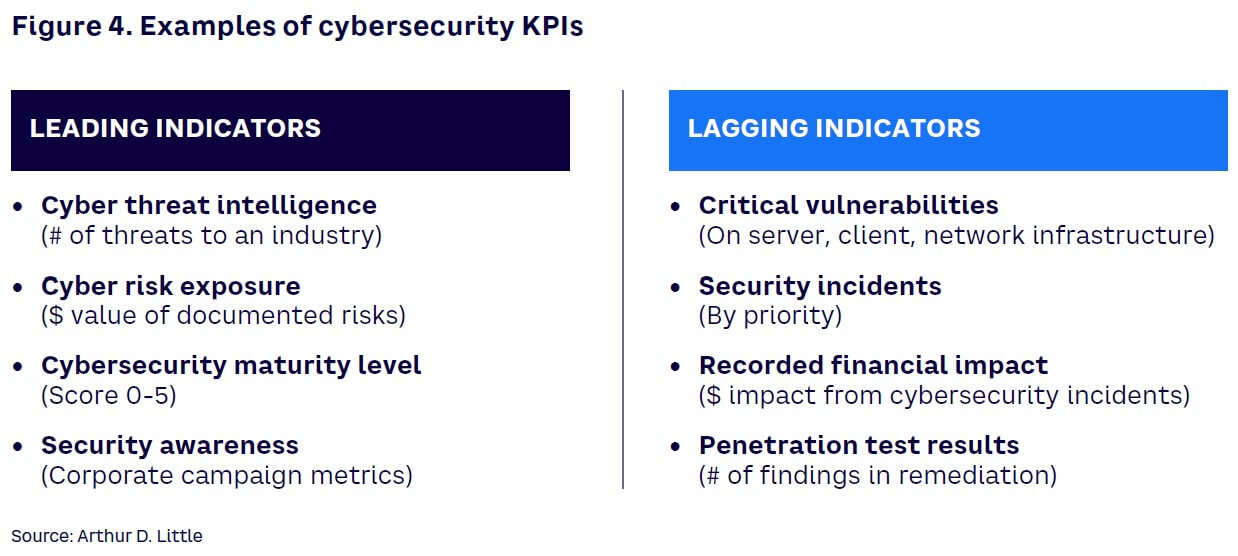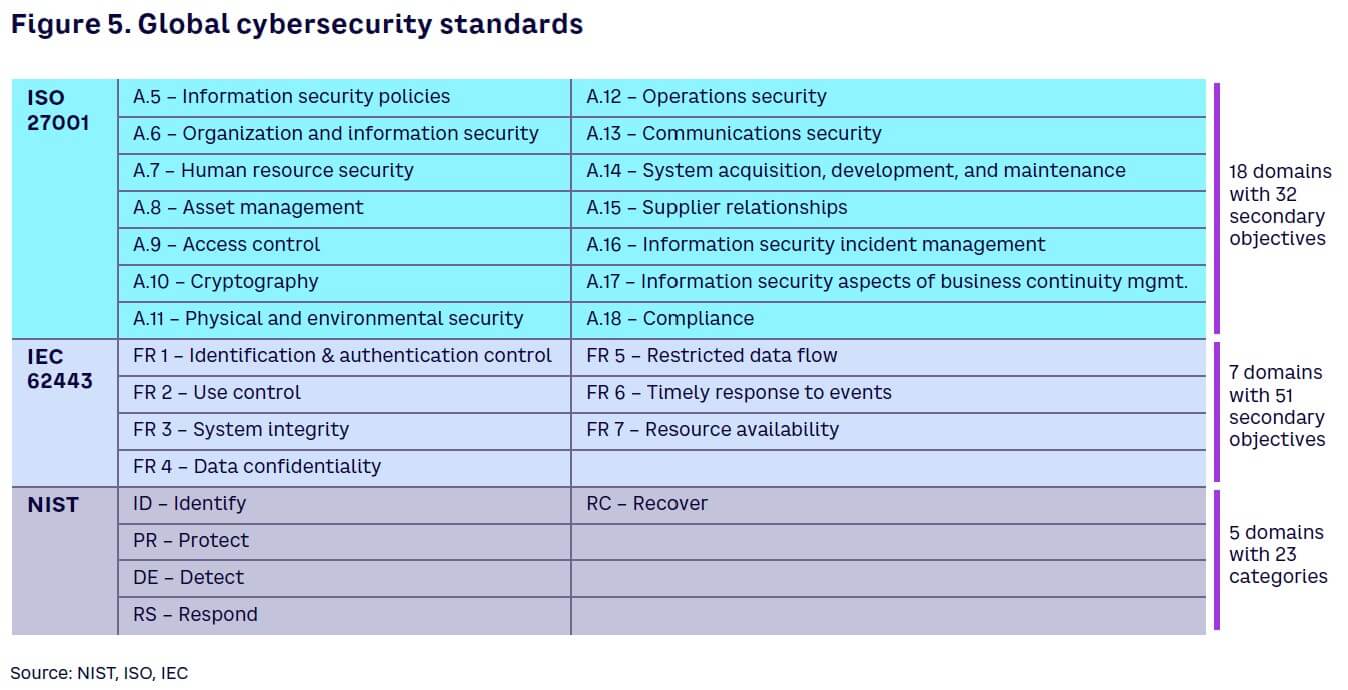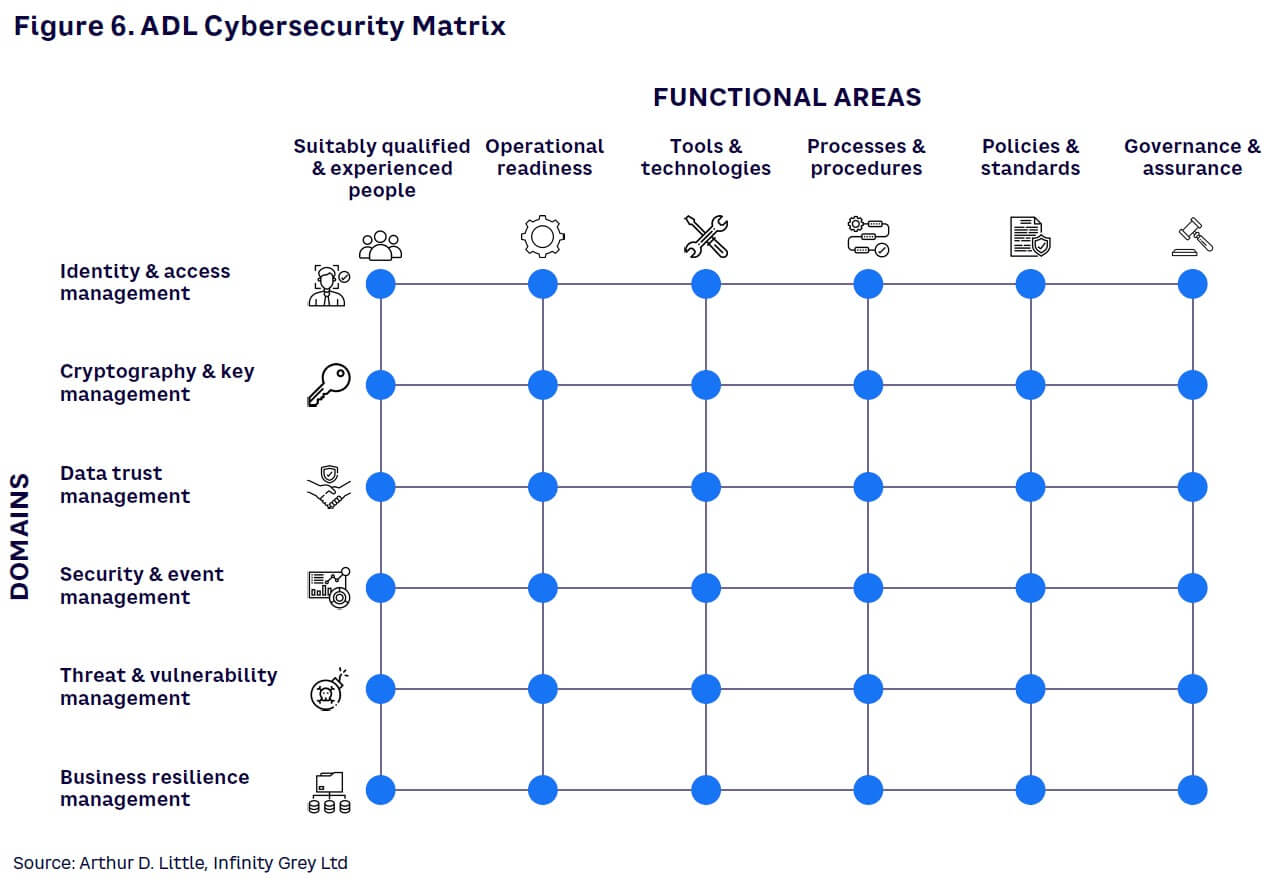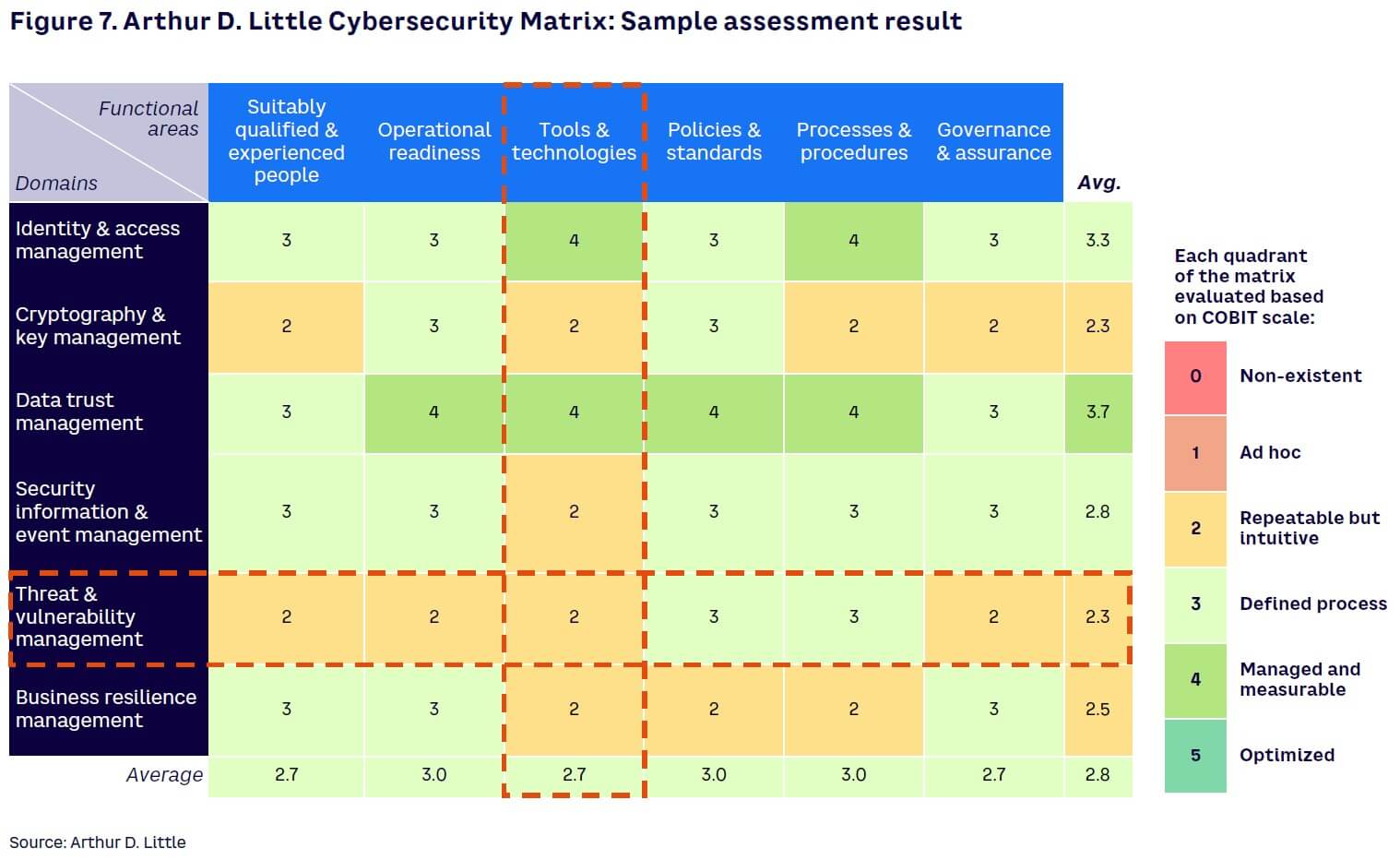
CYBERSECURITY IS EVER-INCREASING IN RELEVANCE
Cybersecurity is a critical topic for both the private and public sectors. Since the first relatively harmless cyberattack in 1988, the cybercriminal space has evolved to become a major threat to the physical and nonphysical worlds alike. In response, governments and organizations must allocate the resources required to prevent cyberattacks against their information and operation systems. At the same time, companies are exposed to a rapidly changing threat landscape as well as a recent spike in cyberattacks due to the COVID-19 pandemic. Without a clear understanding of cybersecurity, organizations will find it nearly impossible to effectively protect against cyber threats.
Between 2015 and 2020, the number of significant cyberattacks on key infrastructure establishments, or economic crimes that exceeded US $1 million in losses, more than tripled (see Figure 1). In 2021, total damages from cyberattacks exceeded $1 trillion worldwide, up more than 50% from 2018 levels. Meanwhile, the conflict between Russia and Ukraine has contributed its share of cyberattacks in 2022, leading to a massive surge globally.

The escalation in damages is unprecedented and puts cybersecurity well on its way to becoming the most serious business threat of the future. As a matter of course, this development did not escape the attention of insurance firms. Companies are facing rapidly increasing premiums, reflecting the surging demand for cyberinsurance and the higher risk exposure, putting additional pressure on already limited cybersecurity budgets. Therefore, executives should be aware not only of the increase in the number and severity of cyberattacks but, even more importantly, about the changing threat landscape.
Major cyberattacks transform threat landscape
The examples included in the sidebar describe some of the transformative cyber incidents against key points of global supply chains. They demonstrate the real-world impact and diversification of cyber threats and reveal the importance of management’s increased attention on cybersecurity.

Cyberattacks on operational technology
The focus of cybersecurity has traditionally been on IT systems. However, in the last decade, cybercriminals have repeatedly targeted OT (see Figure 2). The growing number of attacks on OT demonstrates that cybersecurity is not just about protecting information but also about process safety. Cyber incidents increasingly bear operational and physical risks that can lead to significant business interruption.

The traditional belief that OT is separated from the outside world no longer holds true due to the advancing convergence of IT and OT systems. As part of the fourth industrial revolution, or Industry 4.0, the (Industrial) Internet of Things (IoT) is gaining a foothold in most organizations, leading to the deployment of more and more IT-like systems within OT environments to support key processes. While companies see the vast performance and efficiency gains associated with leveraging their operational data for advanced analytics purposes, they often neglect the additional cybersecurity risks. In line with this, a 2021 study by Palo Alto Networks found that 96% of IT decision makers admit that their current IoT security approach shows upside potential, highlighting capabilities like threat protection, risk assessment, or asset management as their main pain points. Furthermore, the study found that 98% of all IoT device traffic is unencrypted and 57% of IoT devices are vulnerable to medium- or high-severity attacks.
Exposing a growing number of physical devices to the outside world not only increases the complexity of ensuring sufficient security standards but also broadens a company’s attack surface (i.e., its sum of potential targets for a cyberattack). The very nature of IoT devices, being closely interconnected with each other, amplifies the risk of spreading, since a compromised device may contaminate an entire system.
The growing number of cyberattacks on OT means that operators of critical services (such as oil and gas suppliers or utility companies in their crucial role within global supply chains) must ensure awareness and effective protection against cyber threats all the way down to the shop floor.
Acceleration of cyberattacks due to COVID-19
According to a 2020 study conducted by ADL, top management executives confirmed that the COVID-19 pandemic required additional processes and security measures for 36% of companies. Moreover, 46% of companies have provided employee training and 43% have implemented additional awareness campaigns to ensure data and information security.
The pandemic marked a shift in working patterns toward remote working, representing a fundamental change in the cybersecurity threat landscape. Workers moved from better-protected corporate networks to relatively unsafe and often wrongly configured home networks, presenting a critical vulnerability for corporate information. In particular, a rise in ransomware attacks conducted via VPNs used for remote working access (as in the case of Colonial Pipeline), poses a significant cyber threat. Criminals exploit these newfound security deficiencies to their advantage, accelerating the already growing threat of cyberattacks.
The work-from-home (WFH) culture that developed during the pandemic is not anticipated to end, with numerous studies estimating that 25%-30% of the global workforce will continue to WFH at least several days a week for the short and medium term, meaning this increased risk is likely to remain.
CORPORATE CHALLENGES WITH CYBERSECURITY
To address cybersecurity successfully, businesses must overcome three central challenges:
- Visibility. The inherent complexity of cybersecurity has to be translated into understandable, action-oriented recommendations for top management.
- Resource allocation. Companies must address the apparent mismatch between the economic damage of cyberattacks and their cybersecurity investments.
- Measurement. Companies need sophisticated cybersecurity measurement systems to track progress and clearly communicate key issues to top management.
1. Visibility
The complexity of the cybersecurity topic inhibits key management attention and focused action. Often, C-level executives do not easily understand the technical information operational IT staff shares. To address this issue, many corporates adhere to international standards as a benchmark of good cybersecurity practice.
There are two commonly applied standards within IT and OT cybersecurity, respectively: ISO 27001 and IEC 62443. Both standards include multiple domains and secondary objectives with high levels of technical detail that make them difficult to interpret and communicate to key decision makers. Of course, international standards bodies are already addressing this challenge by gearing recent versions of their standards toward reduced complexity. In its 2022 update of the well-established ISO 27002, the International Organization for Standardization serves as a prime example, not only reacting to the changing threat scenarios but also discarding its 14 control domains in favor of four more comprehensive categories/themes as well as reducing the total number of controls by means of merging or minimizing redundancies. While such updates are undoubtedly a major stride toward the desired goal, the challenge of striking a balance between maintaining the required technical level of detail while achieving general comprehensiveness, especially for top-level management, remains a crucial one.
In addition to the challenges of communication, the standards’ mode of assessment is targeted toward compliance rather than recommendations for improvements. ISO and IEC compliance is examined with a questionnaire type of assessment, whereas expert-type assessments are often missing.
Real expert-type assessments are geared toward a “show me, don’t tell me,” attitude and enable the assessment of cybersecurity performance in action. For example, an assessor may ask a firewall operator to access certain logs or show how security configurations have been implemented. Measuring compliance with ISO/IEC or similar standards is a minimum (but not sufficient) requirement that needs to be set before conducting an expert-type assessment.
2. Resource allocation
In 2020, the global costs of cybercrime exceeded $1 trillion, according to a McAfee report. The loss in damages from cyberattacks has reached an estimated $945 billion, while companies have invested only $145 billion in cybersecurity (see Figure 3).

On an organizational level, the mismatch between potential damages and preventive investments looks similar. McAfee estimates the average cost of a data breach for American corporates is approximately $8.64 million, while an average organization spends only $2.6 million on cybersecurity. This clear gap leaves organizations vulnerable to growing cyber threats.
In an attempt to close the resource gap and to defend an organization effectively against cyberattacks, information security is becoming one of the top priorities within the IT budget. IT spending (including for cybersecurity) is often seen as a cost driver rather than an enabling factor for businesses. This means that during crises, companies tend to reduce their respective budget allocation.
Moreover, companies oftentimes prioritize cybersecurity spending only after a major incident. The potential reduction in cybersecurity investment is a worrying trend, particularly given the continuous increase in the number of cyber threats. This mismatch shows the need to focus financial resources on the most impactful measures, which requires a clear prioritization framework.
3. Measurement
It is impossible to guarantee full protection from cyber threats. However, certain indicators can highlight the increased risk to better prepare organizations. Still, holistic measurement of cybersecurity effectiveness is challenging. Calculations of ROI indicators of a cybersecurity program are especially complex, as returns on cybersecurity can only be reflected as the opportunity cost of damages from a cyberattack or an estimated value of cyber risk documented by corporate risk and compliance. To address this challenge, ADL has compiled preventive and reactive measures, indicative of the preparation levels of organizations against cyberattacks. These include “lagging” KPIs like critical vulnerabilities and security incidents that point to cybersecurity issues that already exist in organizations. Alternatively, “leading” indicators include KPIs (e.g., threat intelligence, total risk exposure, and security awareness) that point at general preparedness (see Figure 4).

MEASUREMENT & ACTION PLAN
Digesting cybersecurity standards
Cybersecurity must be broken down into its components to enable targeted action. As mentioned earlier, there are several commonly applied standards within IT and OT cybersecurity, including ISO 27001, IEC 62443, and NIST (see Figure 5). These standards include multiple domains and secondary objectives with high levels of technical detail. Consequently, the standards are difficult to interpret and communicate to senior decision makers, making prioritized action planning with corresponding resource assignments challenging.

ADL Cybersecurity Matrix
From its experience in the development and implementation of cybersecurity strategies, ADL has developed a Cybersecurity Matrix,[1] which breaks down the inherent complexity of the topic for comprehensive understanding (see Figure 6). The framework allows for a deep dive along six cybersecurity domains and six functional areas, each focusing on critical tools or capabilities for coping with the cyber threat landscape.

Each intersection in the matrix is given a score based on an expert-led assessment using the Control Objectives for Information and Related Technology (COBIT) maturity model, with maturity definitions ranging from 0 (nonexistent capability) to 5 (optimized capability). This assessment employs a “show me, don’t tell me” approach, where each statement from an organization’s cybersecurity expert is checked live (e.g., by interviewing company-internal subject matter experts, accessing the firewalls’ management console).
The framework supports companies by providing the granularity they need to unveil their main pain points, while still offering the measurability and conciseness needed for raising awareness among upper management. It effectively creates a baseline for an organization’s cybersecurity program and allows for an actionable plan to ensure that organizations spend cybersecurity budgets on measures with the highest impact.
Creating an action plan to target underperforming areas
The assessment based on the sample Cybersecurity Matrix shown in Figure 7 delivers an average maturity score of 2.8 (defined process). However, it is more important to observe the scores of each domain or functional area. In this sample assessment, Threat and Vulnerability Management is one of the weakest capabilities due to a lack of employees with suitable qualifications, insufficient budgets, largely manual tools, and no regular and defined governance structure to assure key stakeholders of the progress in this capability.

These findings provide an outline for a clear and actionable roadmap for the Threat and Vulnerability Management domain with a focus on increasing FTEs, qualifications of existing staff, assigning additional budget, procuring state-of-the-art tools, and setting up a governance process focused on the domain. Such actions can be defined for each intersection of the matrix to achieve a targeted maturity level across the organization.
The Cybersecurity Matrix based on the assessment delivers a comprehensive set of recommendations to address intersections of the matrix and improve the maturity toward a level targeted by an organization.
Conclusion
ADDRESSING CYBERSECURITY AT THE BOARD LEVEL
Cybercrime is a growing threat that will require C-level attention in organizations across the globe. We offer four steps boards can take toward establishing fit-for-purpose cybersecurity capabilities:
- Engage an objective expert view on the status quo of the organization’s cybersecurity maturity. Ideally, this assessment should ensure the necessary level of granularity while still providing readily understandable insights and priorities for the C-level audience (e.g., ADL’s Cybersecurity Matrix).
- Ensure regular oversight of the organization’s key indicators for cybersecurity performance, both leading and lagging, providing assurance that the controls in place are offering the right level of protection.
- Review fact-based and unvarnished updates on a regular basis. This not only facilitates progress tracking but also ensures that resources are allocated in the most effective way for reaching the intended maturity level.
- Enable the required governance and funding to reach the organization’s target state, based on a dedicated action plan, while ensuring identified vulnerabilities are immediately addressed.
By following these steps, boards can measure, manage, and command cybersecurity performance toward a sustainable reduction of risk.
Note
[1] Co-developed with Infinity Grey Ltd on the basis of their Cyber Maturity Model & its embedded Enterprise Cybersecurity Architecture Framework.



